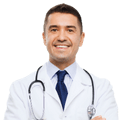30-Second Summary
- Lymphoma is a type of cancer that occurs due to the abnormal proliferation of lymphocytes in the lymph nodes.
- It has two main types: Hodgkin lymphoma and non-Hodgkin lymphoma.
- Symptoms include swollen lymph nodes, fatigue, fever, night sweats, and weight loss.
- Diagnosis is made using blood tests, lymph node biopsy, and radiological imaging methods.
What is Lymphoma?
Lymphoma affects both men and women equally and is more common in older ages. Although its incidence has been increasing in recent years, the success rates of treatments have also risen. Lymphoma, which responds well to both drug treatment and bone marrow transplants, has more than 90 subtypes. It is also the most common type of cancer in childhood.
Among all types of cancer, it has a 5% occurrence rate and is defined as the excessive proliferation of lymphocytes, a type of blood cell, in the lymph nodes.
Hodgkin lymphoma involves an excessive proliferation of lymphoid tissue cells. This type of cancer, which arises from the excessive proliferation of a single cell type, has a very high treatment success rate. It is mainly divided into two groups: classical Hodgkin lymphoma and nodular lymphocyte predominant Hodgkin lymphoma.
Classical Hodgkin lymphoma accounts for 95% of cases of this cancer type. It typically begins in the lymph nodes in the neck area. While the exact cause of this type of lymphoma is not fully understood, autoimmune diseases, the Epstein-Barr virus, and immunocompromised individuals have an increased risk. The most affected demographic group is young adults, at a rate of 90%.
Non-Hodgkin lymphoma is caused by the excessive proliferation of B and T lymphocytes and the stem cells that produce these cells. It most commonly occurs in people between the ages of 65 and 74.
Lymphoma, also known as blood cancer, refers to all cancers originating from bone marrow or blood. Lymphoma accounts for 50% of all blood cancers and is further classified into two types: non-Hodgkin lymphoma and Hodgkin lymphoma.
Both major subtypes of lymphoma also have their own subtypes. Non-Hodgkin lymphoma has 50 subtypes, and Hodgkin lymphoma has 8 subtypes. Each subtype has its own specific treatment procedures. Therefore, a simple diagnosis of lymphoma is not sufficient. Identifying the specific subtype is crucial for the proper treatment.
What Are the Symptoms of Lymphoma?
The early symptoms of lymphoma are not always apparent. In later stages, the disease may also mimic the symptoms of other illnesses. Its symptoms can easily be mistaken for swollen tonsils or soft subcutaneous nodules. It is important to pay attention to additional symptoms when nodules grow, especially in the groin, abdomen, armpits, upper chest, and neck areas.
- Pain after alcohol consumption
- Enlarged spleen
- Bone pain
- Itching
- Abdominal cramps
- Unintentional weight loss
- Fatigue
- Night sweats
- High fever
- Swollen tonsils
- Coughing and shortness of breath
- Persistent flu-like symptoms
- Difficulty in recovering from sinus and lung infections
- Constipation
- Digestive system issues
- Fever
- Cough
- Asthma attacks
What Are the Tests for Lymphoma? (Diagnosis)
Lymphoma is usually detected when patients seek medical attention for enlarged lymph nodes. However, since lymphoma mimics the symptoms of many other diseases, it can be difficult to diagnose in the early stages.
To diagnose lymphoma, doctors order a series of blood tests. However, the most important diagnostic tool is a biopsy of the lymph nodes. If lymphoma cells are detected in the tissue samples taken from the lymph nodes, a diagnosis of lymphoma is confirmed.
It is also necessary to determine the stage of the disease. For this, bone marrow biopsy and radiological tests are used. It is crucial to understand whether the disease has spread to other organs during this examination.
Patients diagnosed with lymphoma via biopsy should undergo a PET/CT scan to determine which part of the body the cancer is active in. To perform a PET scan, a substance containing glucose is injected. Since cancer cells consume sugar to produce a large amount of energy, they light up in the PET scan, indicating their location.
Determining the stage of lymphoma is essential for planning treatment. The Ann Arbor staging system is used to identify the stage, considering both the patient's symptoms and biochemical analysis results.
Genetic Tests
To precisely determine the treatment plan for lymphoma, it is necessary to identify the specific subtype. Genetic tests are used for this purpose. Afterward, a PET scan is also used to identify the stage of cancer and whether it has spread to other areas, ensuring proper treatment is planned.
Types of Lymphoma Treatments
Chemotherapy Treatment
Chemotherapy plays a significant role in the treatment of lymphoma. Depending on the stage and course of the disease, outpatient chemotherapy may be applied, or more intensive, inpatient chemotherapy may be required. Additionally, radiotherapy can be used as a support treatment to chemotherapy.
Immunotherapy
Another treatment option, as commonly preferred as chemotherapy, is immunotherapy. The drugs used in this treatment attach to lymphoma cells, triggering their destruction by activating the immune system.
Lymphoma Drugs
In the last 10 years, many drugs have been developed for the treatment of lymphoma. These drugs are specifically targeted to cancer cells, leaving healthy cells nearly unharmed while eliminating cancer cells.
Bone Marrow Transplant
One of the most effective treatments for lymphoma is bone marrow or stem cell transplantation. However, before this method is considered, chemotherapy or immunotherapy options should be evaluated.
Causes of Lymphoma
There are infectious, environmental, and genetic factors that can cause lymphoma.
Occupational Exposure
Lymphoma can occur due to exposure to harmful chemicals, particularly among agricultural workers.
Infectious Causes
Various microorganisms increase the risk of developing lymphoma, with some specifically associated with lymphoma development. These include:
- The bacterium Helicobacter pylori is linked to MALT (mucosa-associated lymphoid tissue) lymphoma,
- Bacteria such as Borrelia burgdorferi, Chlamydia psittaci, and Campylobacter jejuni,
- The T-cell lymphotropic virus, which causes adult T-cell lymphoma, the Hepatitis C virus associated with lymphoplasmacytic lymphoma,
- Diffuse large B-cell lymphoma,
- And the HHV8 virus, which can cause primary effusion lymphoma and Castleman disease.
Immunodeficiency
A suppressed immune system, for various reasons, is also among the factors that increase the risk of developing lymphoma.
Stages of Lymphoma
Stage 1
In Stage 1, lymphoma is found in only one lymph node region, particularly in a single lymphoid structure such as the thymus, spleen, or nasopharynx, or in a single area outside of the lymphatic system.
Symptoms of Stage 1 Lymphoma
Symptoms of Stage 1 lymphoma are not very specific, often being mistaken for less severe conditions, making diagnosis at this stage difficult. Common symptoms include:
- Swollen lymph nodes
- Fever
- Night sweats
- Itching
- Loss of appetite
- Weight loss
- Chronic fatigue
The most specific symptom of Stage 1 is pain in the lymph nodes after alcohol consumption. Swollen lymph nodes generally do not cause pain outside of this situation.
Stage 2
In Stage 2, there is involvement of more than one lymph node region on the same side of the diaphragm. There may also be involvement of organs on the same side of the diaphragm.
Symptoms of Stage 2 Lymphoma
In addition to the symptoms seen in Stage 1, organ involvement in Stage 2 may cause further symptoms. For example, if the skin is affected, skin lesions or thickening of the palms may occur. If bones are affected, bone pain or immobility in a limb may be observed. If the central nervous system is involved, sensory loss or headaches may occur. Symptoms vary depending on the affected organ.
Stage 3
In Stage 3 lymphoma, there is involvement of lymph nodes on both sides of the diaphragm. There may also be involvement of organs outside the lymphatic system or involvement of the spleen.
Symptoms of Stage 3 Lymphoma
In Stage 3, symptoms vary depending on the location of the tumor. For example, if there is a tumor in the spleen, symptoms may affect nearby organs such as the stomach, leading to symptoms like bloating or shortness of breath. Other symptoms in Stage 3 include:
- Itching
- Frequent, serious infections
- Abdominal swelling
- Loss of appetite
- Feeling full after eating small amounts
- Exhaustion
- Chest pain
- Fatigue
- Back pain
- Swollen lymph nodes in various parts of the body
- Easy bruising
Additionally, patients may exhibit symptoms of the "B" stage, which include:
- Increased night sweats
- High fever
- Unintentional loss of more than 10% of body weight within six months
Stage 4
In Stage 4, multiple tissues and organs are involved, along with the involvement of several lymph node regions.
Symptoms of Stage 4 Lymphoma
In the final stage of lymphoma, Stage 4, the existing symptoms are more severe. The most common symptom at this stage is swollen but painless lymph nodes. However, alcohol consumption may cause these lymph nodes to become painful. Symptoms may vary depending on the location of the tumor. For example, if cancer cells have metastasized to the brain, headaches and seizures may occur. If it has spread to the chest, shortness of breath may occur, and if the stomach is affected, nausea and pain may be experienced. Additional symptoms seen in Stage 4 include:
- Pain caused by a tumor pressing on a nerve
- Loss of appetite
- Itching
- Easy bruising
- Easy bleeding
- Chills
- Exhaustion
- Fatigue
Additionally, symptoms may vary depending on the classification of the lymphoma.
What is the average age for lymphoma?
Lymphoma is more common in certain age groups. It is especially prevalent among individuals aged 15 to 34 and those over 55. In addition to age, the presence of other risk factors increases the likelihood of developing lymphoma.
Is lymphoma fatal?
There are different types of lymphoma, so it is not accurate to say that every type of lymphoma is fatal. However, fast-progressing types have lower survival rates. Several factors influence the likelihood of death from lymphoma, with the stage at which the diagnosis is made and the type of cancer being particularly important.
How long does a lymphoma patient live?
Due to the different types of lymphoma, survival rates vary. In fast-progressing types, if treatment is not administered, the patient may be lost within months or even weeks. In slow-progressing types, due to the tumor's extremely slow growth, patients may survive 15-20 years even without treatment.










K** K** | 23 Sep 2024